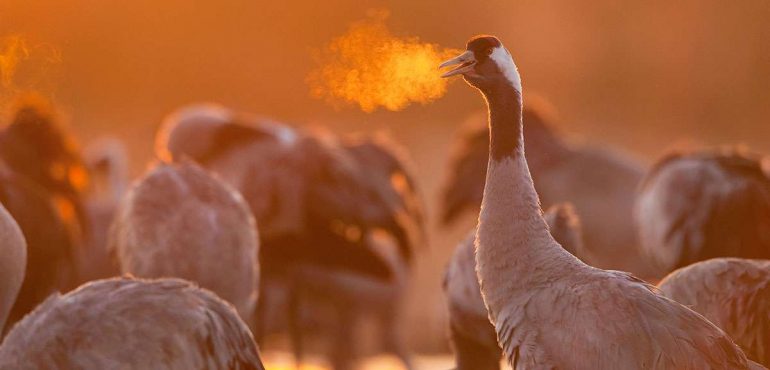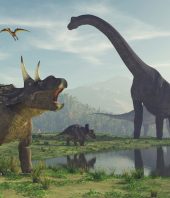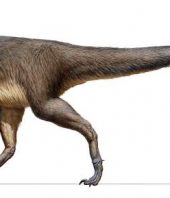Many dinosaurs were swift and active animals, which is puzzling given that Earth’s atmosphere contained less oxygen than it does today when dinosaurs ruled. They may have thrived in the challenging conditions due to their efficient bird-like lungs, according to a new study.
“Birds and mammals are highly active and evolved a way of living that requires a lot of oxygen, so their lungs are complicated,” says Robert Brocklehurst at the University of Manchester, UK. “Lizards and snakes have simpler lungs – they don’t need to get a lot of oxygen out of the air because they’re not doing anything with it.”
He and his colleagues compared dinosaur lungs both to those of living crocodilians – which shared a common ancestor with dinosaurs – and to those of birds, which are modern-day descendants of dinosaurs. They removed the lungs of an alligator and an ostrich, and found that the skeletal support structures surrounding the lungs were dramatically different.
Smooth or furrowed
The alligator’s lung cavity is smooth, which Brocklehurst says may allow the lungs and some other internal organs to glide as they move to pump air in and out while the animal swims.
The ostrich lung cavity, in contrast, is furrowed. Rows of vertebrae and ribs jut into it, leaving deep grooves in the surface of the lungs. “The ribs are very much embedded in the lung tissue and that gives it a lot of structural support,” says Brocklehurst.
With that much physical support, the walls of the lungs don’t have to be as thick, he says, which means the soft tissue of the blood-gas barrier can be thinner. As a result, birds can extract more oxygen from the air they breathe and transfer it into their blood.
When Brocklehurst and his colleagues used CT scans to compare the structure of the lung cavities of 4 modern crocodilians and 29 modern birds with those of 16 dinosaurs from across the dinosaur family tree, they found that all of the dinosaurs had vertebrae more similar in shape to those of birds than those of reptiles. This suggests the dinosaur vertebrae jutted into the lung cavity as they do in living birds.
“We thought maybe some of the dinosaurs would have lungs more like birds, and some would be less similar. But basically everything just looked like the birds,” says Brocklehurst. “I was a bit surprised at quite how similar to birds some of the early dinosaurs were.”
If even the very first dinosaurs to evolve had bird-like lungs, this may help explain why dinosaurs became so successful. The other animal groups who shared their world may not have had lungs as well suited to extracting oxygen from the air. “That difference may have let dinosaurs rise and become dominant,” says Brocklehurst.
Journal reference: Royal Society Open Science, DOI: 10.1098/rsos.180983
Source: New Scientist, Full Article






